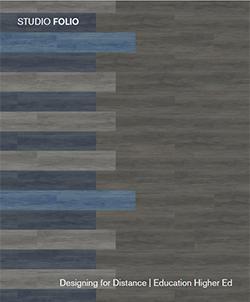Editor’s Note: This article originally appeared in Essentials magazine. It has been altered to reflect ongoing conversations and guidance.
If there’s one thing we can all agree on, it’s that the fall semester will not be business-as-usual.
As school systems across the country plan to reopen, administrators have to consider what a safe and healthy learning environment looks like for their students and their staff. What is the reopening timeline? How will instruction take place—in-person, online, or some sort of hybrid? What will scheduling have to look like in order to maintain proper distancing and lower density? How will facilitating this change affect budgets that are already under pressure?
Lots of questions need to be answered before the first day of classes.
Much of the public health guidance for reopening focuses on updated cleaning protocols and changing student and staff behaviors. But knowing how much the built environment can impact student outcomes, we should be giving equal consideration to our facilities. How will the coronavirus influence the design of classrooms, corridors, and public spaces in short term and long term? And how could modular flooring play a part in those design solutions?
The need for flexibility and adaptability
At this moment, schools are making short-term decisions about their spaces while pivoting their long-term plans. We’re seeing interventions such as taping for six-foot queueing and circulation as well as rearranging furniture in order to reduce classroom capacity—strategies that will certainly get schools through the immediate future.
However, it’s still important to look beyond the fall semester toward a moment in time when the coronavirus risk is diminished to a point where schools can return to a sense of stability, if not normalcy.
Based on a number of factors—including budget, location, public health guidelines, and feasibility of remote learning—going back to school will look different for each individual school system. And a lack of uniform guidance makes returning a challenge, particularly when it comes to temporary and semi-permanent space changes.
Which means that any of-the-moment design solutions within spaces have to be easy, quick, and low-cost. Flexible design strategies could take advantage of modular flooring to make active changes; for example, selectively replacing tiles to facilitate physical distancing or to direct movement.
Addressing safety and functionality at the same time will be important into the future, but the impact of COVID-19 on the design of our schools remains to be seen. Because of this, adaptability will become more important for buildings and the spaces within them.
Adaptability requires the capacity to accommodate substantial change over the lifetime of a building in response to its social, economic, and physical surroundings. Adaptability also responds to the ever-changing needs of building occupants. We were already seeing newer school buildings embracing this idea with more multi-purpose spaces that could accommodate many uses. It’s likely we’ll see this trend continue to as space utilization decreases.
Addressing physical distancing
Understanding that school buildings need to be both flexible and adaptable, how do we incorporate those ideas into the future design of school facilities? And how do we create a sense of physical and psychological security for staff and students?
We use floor design for school branding and wayfinding, but now it will become more prominent in terms of safety. As we’re rethinking social norms within our school buildings, the visual hints provided by the floor can help us keep connected from a safe distance.
In corridors, for example, we can create lanes for uni-directional and bi-directional movement or create separation with spacing elements down the middle. Within open spaces, the floor can work together with furniture to create zones. The flexibility of modular flooring allows us to suggest boundaries through lines, banding, color and pattern.
Unfortunately, there is no one-size-fits-all approach to reopening our schools. But knowing that the health and safety of students, teachers, and staff is paramount, it makes sense to seriously consider physical interventions within the school building. Visual reminders—via floor design or via more temporary signage—can play a large role in creating a sense of psychological security and influence safer behavior.
With hard and soft surface tiles in squares and planks, floor designs become not only aesthetically pleasing but also uniquely functional. Not only can we can use modular flooring to create built-in cues that prompt safe distancing behaviors, but we can also use floor markers to instruct cleaning crews on proper furniture placement and zoning. Our Designing for Distance folios for Higher Ed and K12 offer inspiration for creating boundaries, zones, and movement throughout various types of facilities.
 |
 |
|---|






